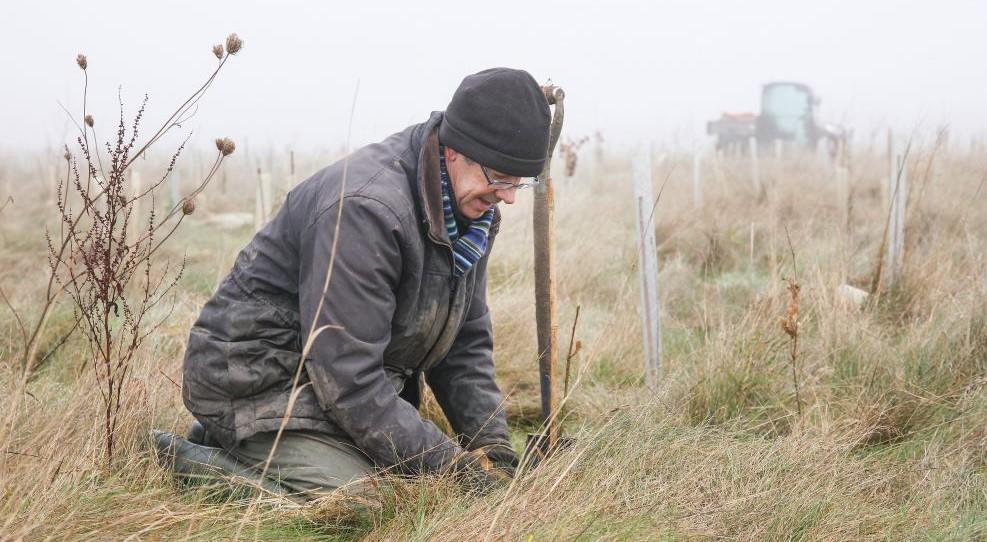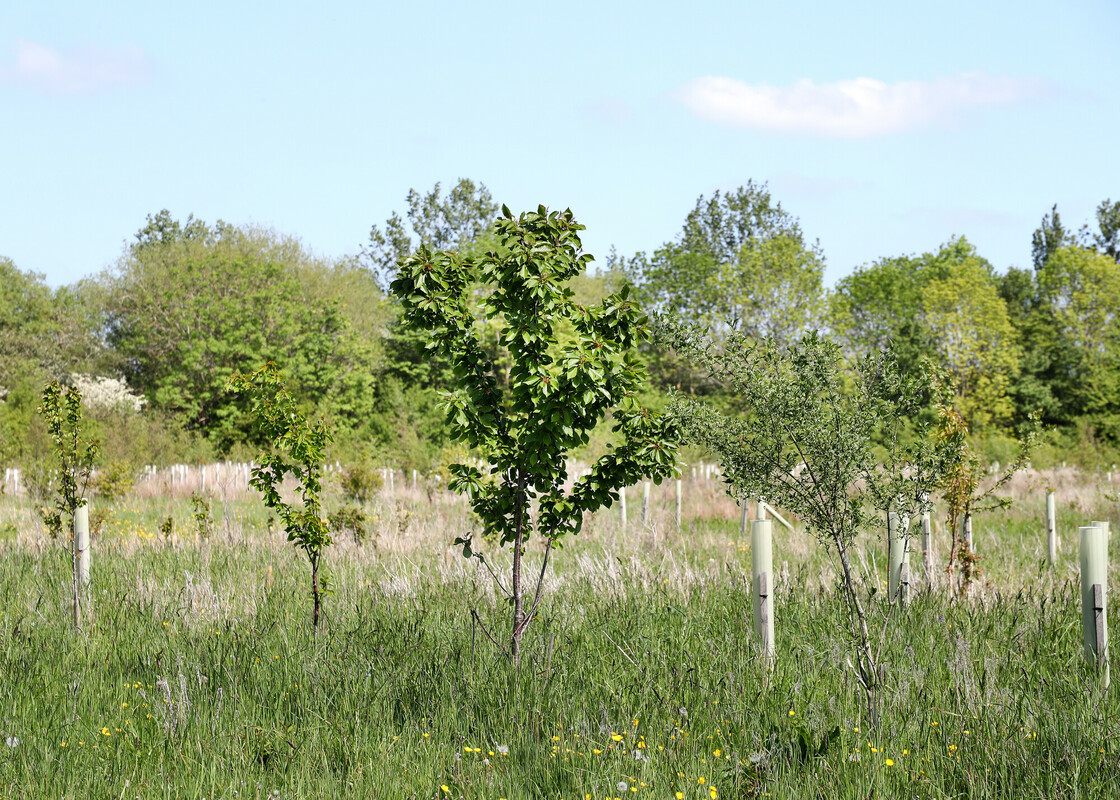
Volunteers tree planting in the Forest
Between November and March, individuals, corporate partners, and community groups will come together to help us plant 90,000 native broadleaf trees in two new areas of the Forest. But what does a volunteer tree planting session in the Forest involve? We asked Jonathan Saunders, Volunteer Manager at the Heart of England Forest.
Creating new woodlands
Following a tea or a coffee to warm up, and some time to socialise with fellow volunteers, everybody is ready to go. Equipped with a planting spade each, the team make their way out to the currently bare field ready to transform it into something very special.
The volunteers start off by planting the shrub tree species on the edges of the woodland and along the ride edges, creating an outline of the woodland to be. A member of staff walks ahead, laying out wooden canes to mark the position of the trees, and is followed by a pair of volunteers laying out loose guards and saplings ready to be put into the ground.

We then begin planting the trees that have been laid out. A hole is dug, and the tree sapling gently placed inside. The remaining soil is broken up and then replaced into the hole where it is gently compacted. Then, the wooden cane is pressed into the soil next to the tree, careful to avoid any roots. And finally, the protective guard is wrapped gently round the tree, protecting it from the elements, and the deer and hare which roam freely through the fields.

With the shrubs in the ground the team then move onto the oak trees, which are planted in clumps inside the border of shrubs. In between the oak, the next canopy species are then planted, filling the gaps and bulking out the woodland. These often include pioneer species such as birch and aspen – fast growing species which then protect the slower growing oaks.
Finally, the fruiting tree species are planted in the last spaces close to the grassy ride edge, ensuring a good source of flowers and for our native pollinators, birds and small mammals.
With this routine, by lunchtime there are around 400 trees in the ground, and by the end of the day almost 800! With each passing week the woodland grows and grows, and eventually each field is completed. Before you know it, the newest piece of the Heart of England Forest is planted, ready to stand the test of time as it grows into a wonderful woodland.
A diverse native Forest

We plant up to 30 species of native trees and shrubs to create a Forest that looks, smells and feels like the English woodlands we have lost. Planting this range of species also results in a climate change resilient Forest. Find out more about the trees we plant.
How to plant a tree
Many of our volunteers join us having never planted a tree before, but in no time at all they have planted hundreds. Watch how we plant our trees.
How you can get involved
If you have not volunteered with us before, now is the perfect time. With a growing Forest and expanding volunteering programme, there are more opportunities to get involved than ever, whether you are interested in planting and managing our woodlands, growing trees in our tree nursery, surveying wildlife and plants, or supporting us from the comfort of your own home.
Visit our volunteer web page to find out more.



